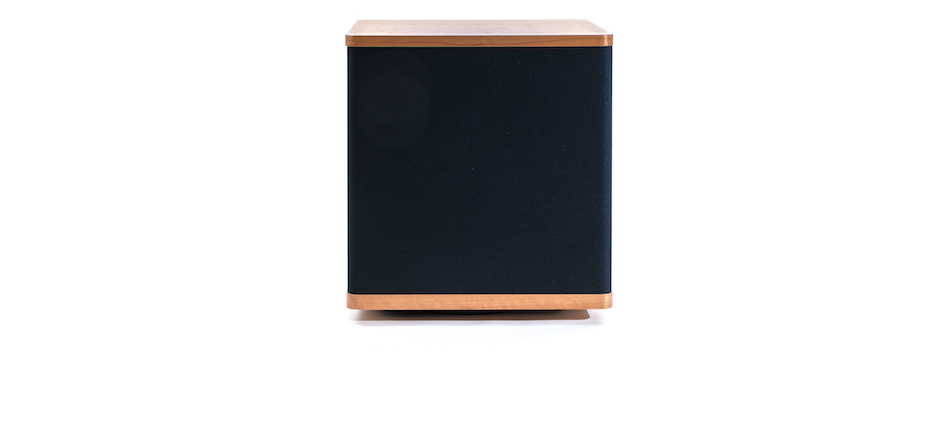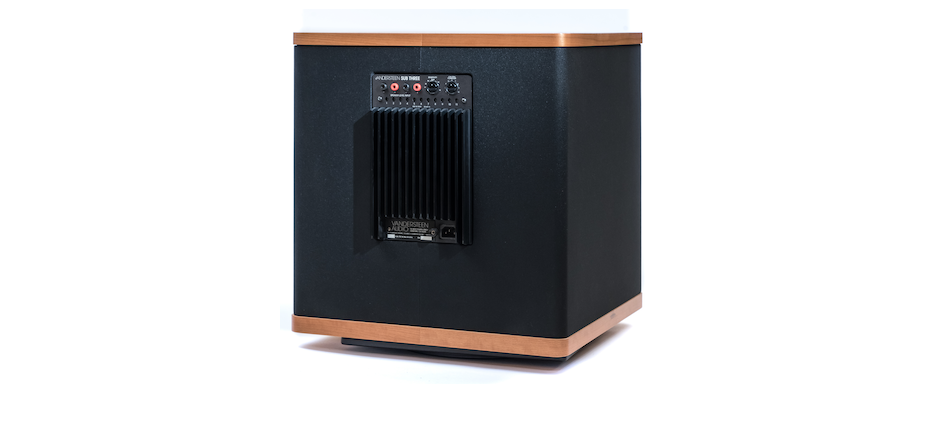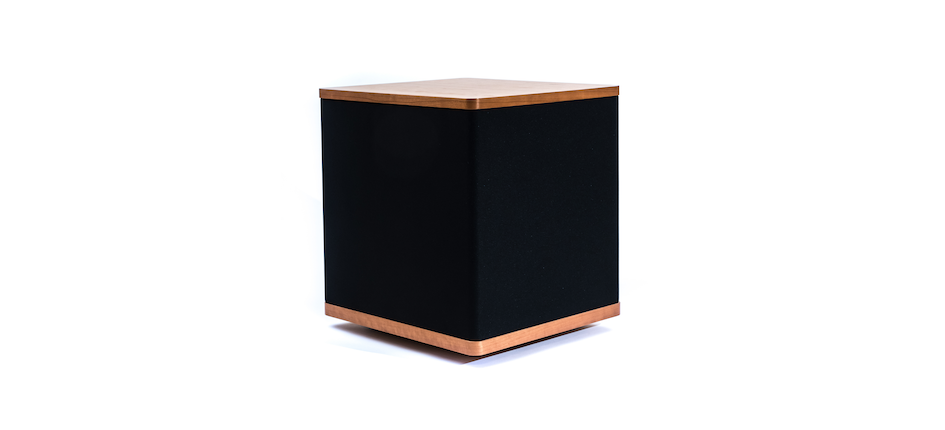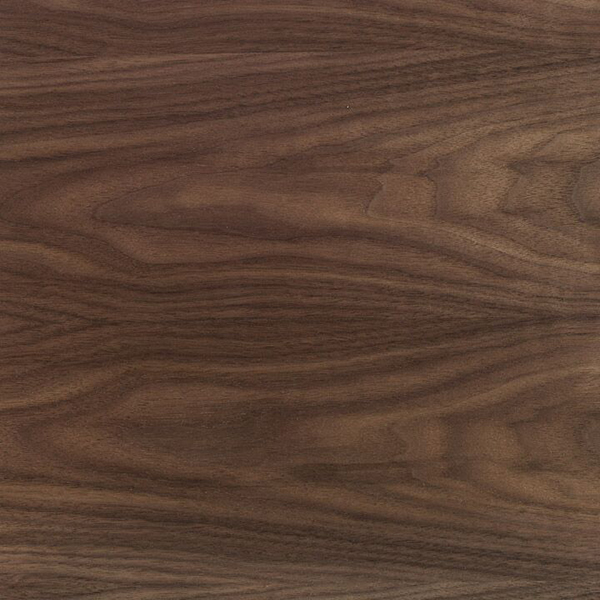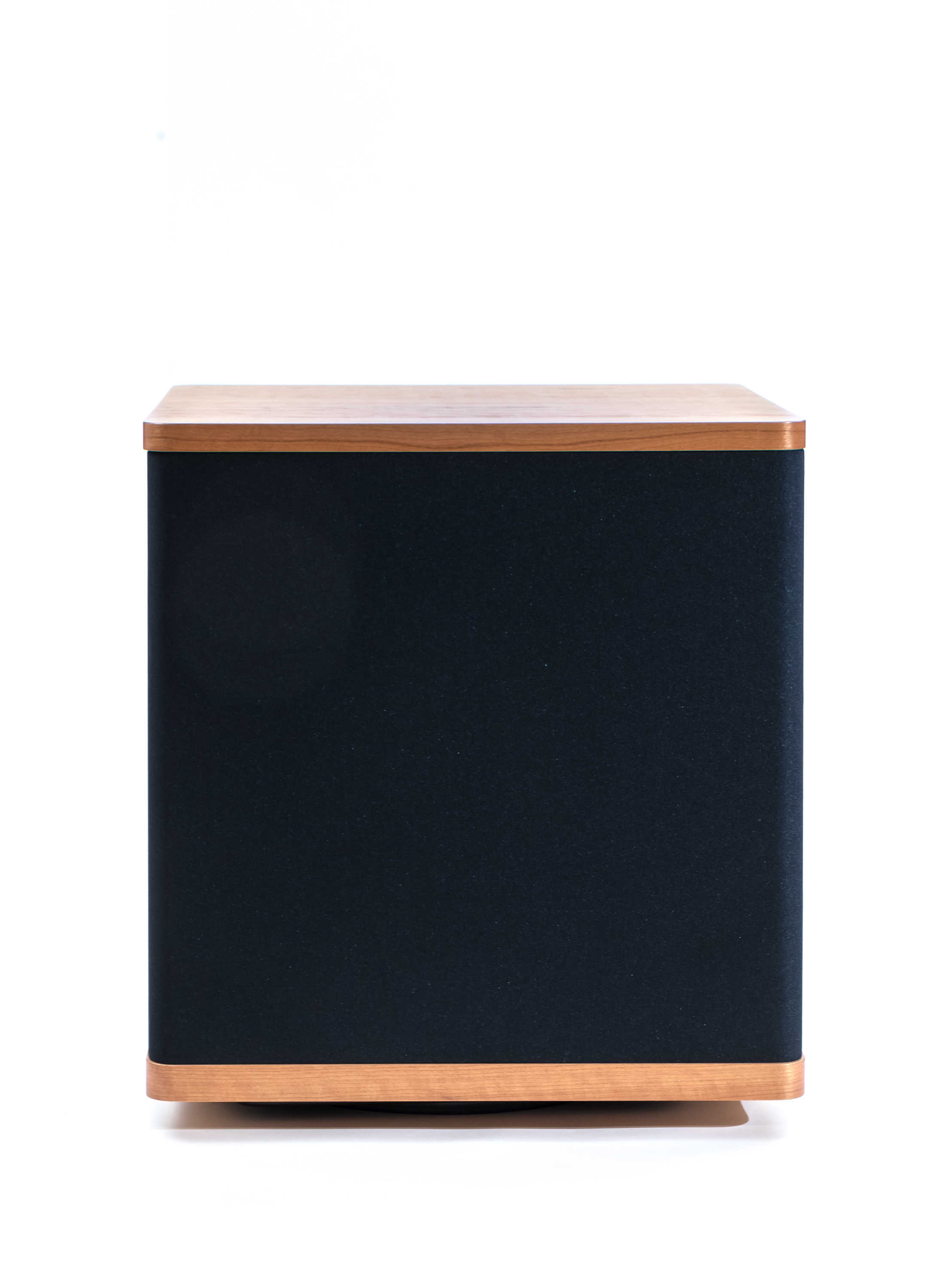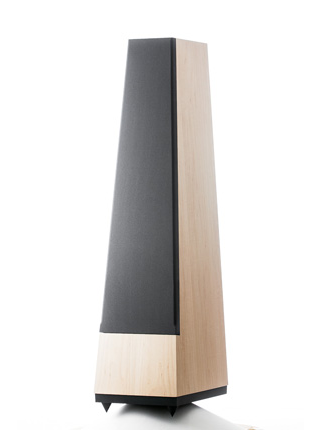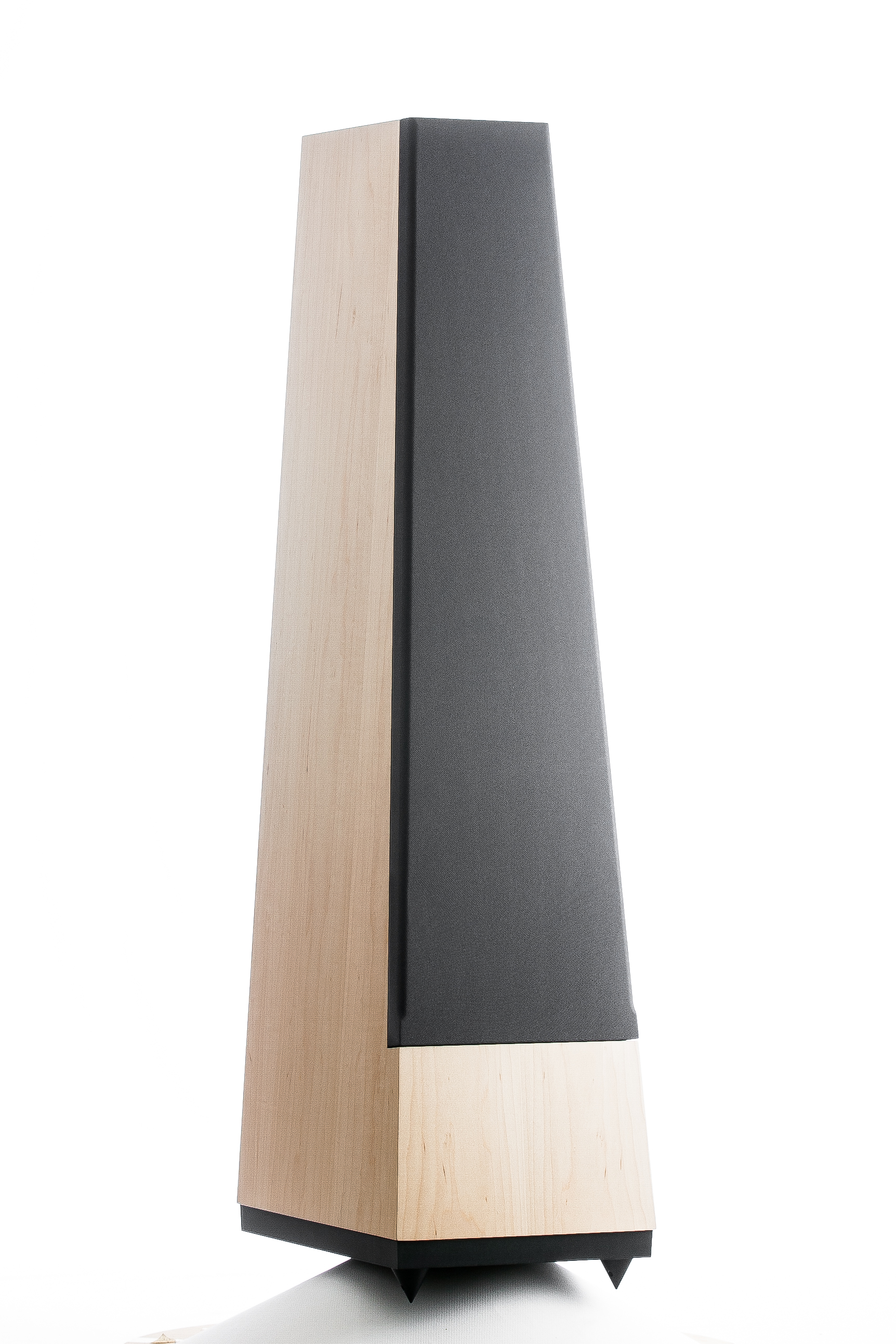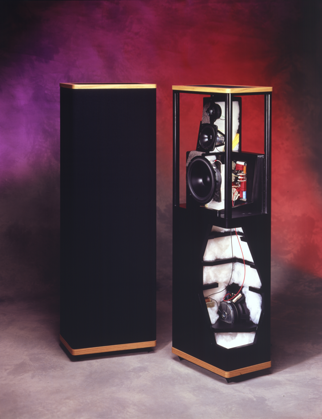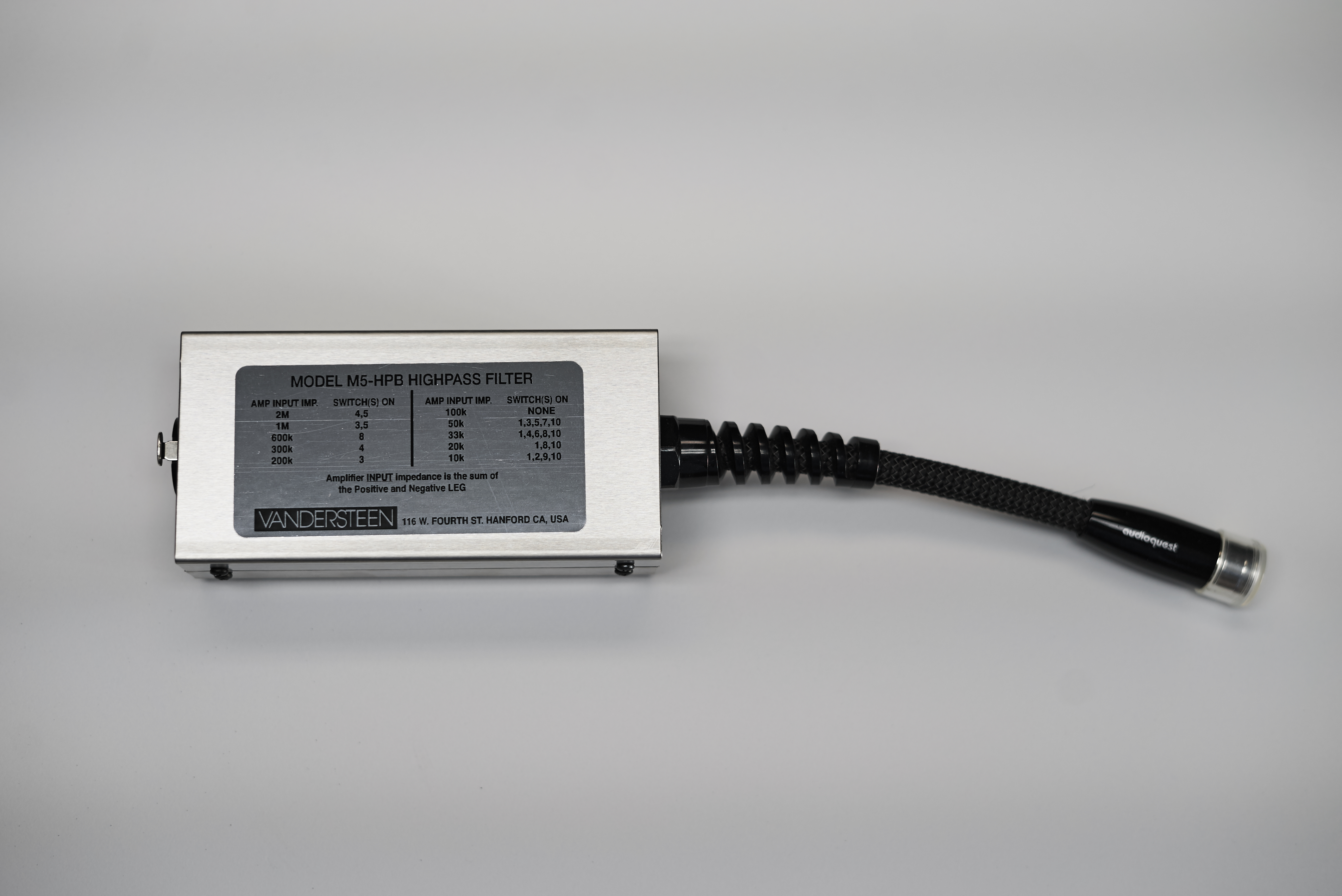The SUB THREE subwoofer receives its input from the power amplifier and is designed to maintain maximum sonic continuity between the subwoofers and main speakers adapting to the sonic characteristic of the main left and right amplifiers and is useful in all music and home theater systems where a crossover can be inserted between the preamplifier/processor and the main power amplifier. The SUB THREE subwoofer is compatible with a wide range of main speakers from Vandersteen as well as other manufactures. Large main speakers with accurate frequency and phase response extending at least an octave below the crossover point will provide optimum blending and linearity through the crossover region. (Basic filter theory dictates that the main speakers must have predictable response at least an octave below the crossover point to insure seamless blending and linearity with the subwoofer.)
Smaller, limited-range main speakers will benefit from the SUB THREE’s superior pitch definition and lack of midrange interference providing better integration and system coherence than is possible with a conventional subwoofer.
The subtlety of a plucked bass, the complex harmonics of an organ and the incredible power of modern movie sound effects are all beyond the reach of many speaker systems. Subwoofers rarely excel at all three - their designers choosing to compromise one in exchange for proficiency at another. Vandersteen Audio refused to compromise. The original Model 2W spent five years in the prototype stage being tested, evaluated, measured and revised before its introduction in 1984. Equal exhaustive attention was paid to the technology of the 2Wq and now the SUB THREE
Vandersteen SUB THREE subwoofer uses three active eight-inch cast aluminum basket drivers rather than a single large woofer. The three eight-inch drivers equal the cone area of a fourteen-inch woofer, but with much higher motor-to-cone-area ratio. The high ratio improves pitch definition and insures stable frequency and phase responses throughout and beyond the drivers ’ operating range. This allows more crossover design flexibility since a steep-slope, high-order crossover is not necessary when the drivers perform well several octaves past the crossover frequency.
The drivers are downward firing in a front slot-loaded configuration to provide superb bass detail, impact and dynamics while minimizing any potential midrange interference.
Each of the drivers uses a heavy duty 1 1/2 inch, four-layer voice coil engineered to withstand high temperatures. Each voice coil is within a massive 40 oz. high gauss magnet structure for increased control and efficiency. Critically damped, long fiber cones with environmentally stable butyl rubber surrounds are used for excellent rigidity and linearity.
The drivers are connected to a built-in switch mode power supply 325-watt amplifier with advanced feed-forward error correction. This powerful amplifier provides the benefits of bi-amplification to the system without the expense and complexity of an additional separate amplifier.
The cabinets of the SUB THREE subwoofer are constructed of MDF (Medium Density Fiberboard), a wood product denser and acoustically inert compared to particleboard. FFT analysis and listening tests refined both the shape of the enclosure and the placement of the internal braces. The entire structure is carefully designed to minimize cabinet resonances that could affect the system ’s performance.
Feed-Forward Error Correction
Many subwoofers use a negative feedback or servo control type of error correction that samples the output of the subwoofer amplifier or the movement of the driver and makes comparisons to the original input. When a deviation is detected, a correction signal is generated to counter the error. A shortcoming of these systems is that an error must actually occur before the correction process can begin. The negative feedback and the non-linearities of the correction create their own audible distortions that compromise the performance of the subwoofer.
The SUB THREE uses Feed-Forward Error Correction (FFEC), which eliminates the errors before they begin. Extensive spectrum, FFT and dynamic analysis of the original 2WQ and now the SUB THREE detected the errors that would occur during normal use. The inverse of these errors was then designed into the integral amplifier to eliminate the errors before they could occur. Errors resulting from coupling, loading, driver phase and frequency non-linearities and thermodynamic box loss are eliminated by FFEC.
Unique Crossover Connection
Conventional powered subwoofers receive their input signal directly from their crossover before the main amplifier. Therefore the conventional sonic signature of the main amplifier that is an important part of the sound you hear from the full-range speakers is missing from these subwoofers.
This causes blending and integration problems as the sonic characteristics of the system are different above and below the subwoofer crossover point. This deterioration of system coherence is why conventional subwoofers have never been totally accepted as part of ultra high-performance audio systems.
The SUB THREE uses a unique, innovative connection method that reduces the current demands on the main amplifier, but leaves the main amplifier in the signal path to the subwoofer. The system realizes the benefits of bi-amplification with absolute sonic continuity as the main amplifier ’s characteristics that are evident through the full-range speakers are maintained to the deepest bass, but with the power and control of the SUB THREE’s internal switch mode power supply 325-watt amplifier.
The crossover of the SUB THREE is divided into separate low-pass and high-pass sections. Like conventional subwoofers, the high-pass portion of the SUB THREE’s crossover is inserted into the signal path just before the main power amplifier to roll-off the low-frequency response of the main amplifier and speakers. The critical difference is that the SUB THREE does not take its input from its crossover, but samples the output from the main amplifier that is driving the main speakers. To compensate for the low-frequency roll-off induced by the crossover, the response of the SUB THREE’s amplifier is contoured to restore the low frequencies to the proper level. The SUB THREE’s input impedance is high enough that it has no effect on the output of the main amplifier.
Since the high-pass portion of the crossover is inserted between the preamplifier and power amplifier, you must be able to separate the preamplifier and power amplifier sections of a receiver or integrated amp for it to be compatible with the SUB THREE. In all systems, the input impedance of the main amplifier must be known in order to properly set the SUB THREE’s high-pass crossover. The low pass crossover is integrated with the SUB THREE ’s amplifier and does not require adjustment. Both sections of the crossover are transient perfect, 6dB per octave designs. Variable value crossovers are available both in single-ended and balanced configurations to match any main amplifier.
The output level of the SUB THREE can be adjusted to match speakers with an efficiency rating of between 82dB and 100dB.
The SUB THREE’s Unique 11 Band Equalization and Adjustable Q
High-pass filtering allows the main amplifier to perform better, unburdened of reproducing deep bass, and is also the only way to ensure flat frequency response at the crossover to SUB THREE subwoofer. Passive speaker designs always require placement compromises between the areas in the room where the imaging is typically best (farther out in the room) and where the bass is best (closer to the walls for boundary reinforcement). With Vandersteen’s powered subwoofers the speaker can be placed out in the room where it images best, while the 11-band EQ built into the SUB THREE ensures powerful but perfectly tailored in-room bass performance. This represents the best of all both things
Besides the 11-Band EQ the SUB THREE has Q and attenuation controls. In Subwoofer engineering terms, system Q is the product of a complex mathematical equation derived from drivers, electrical and enclosure parameters. In practical terms, it relates to the character of the bass response. A low Q subwoofer sounds highly damped and very tight. A high Q subwoofer produces a warm loose bass with more energy in the most audible bass range. The trick has always been to try to find the subwoofer with the Q that best matched your listening room and personal tastes.
The Vandersteen Subs are the first subwoofers to feature adjustable Q. A bass contour control on the rear panel allows you to set the system Q anywhere from .5 (Slightly over-damped, i.e.. tight jazz sound) to 1.2 (Significantly under-damped, i.e., typical mass-market home theater sound). Somewhere in this wide range, you will find the perfect sonic complement for your room and taste. Using specific recordings provided with you can easily and accurately sets the EQ and Q.
Mono or Stereo Bass
There are significant advantages to using two subwoofers. Modern sources such as streaming, CDs, DVDs, digital high-resolution music files, and Blu-ray Discs maintain full stereo separation to below 20Hz. Summing the channels into a single subwoofer reduces or cancels all the low-frequency information containing phase differences between the channels. Stereo subwoofers reproduce all of the bass information complete with the phase differences that help provide the imaging and location cues we use to place people and things at distinct points in the sound field. Stereo subwoofers also improve linearity on mono as well as stereo sources by coupling the bass to the room at two points and lend themselves to natural placement near the corners where low frequency room gain is often desirable.
Ultimate Multi-Channel
A pair of SUB THREE subwoofers is the premier configuration for high-quality multi-channel home theater systems where the surround-sound processor can be programmed to redirect the LFE (Low Frequency Effects) information to the main speakers. In addition to the benefits of stereo bass, disabling the surround processor’s LFE output often improves the system ’s midrange clarity and articulation. For the ultimate system, additional SUB THREE’s can be added to the surround channels.



